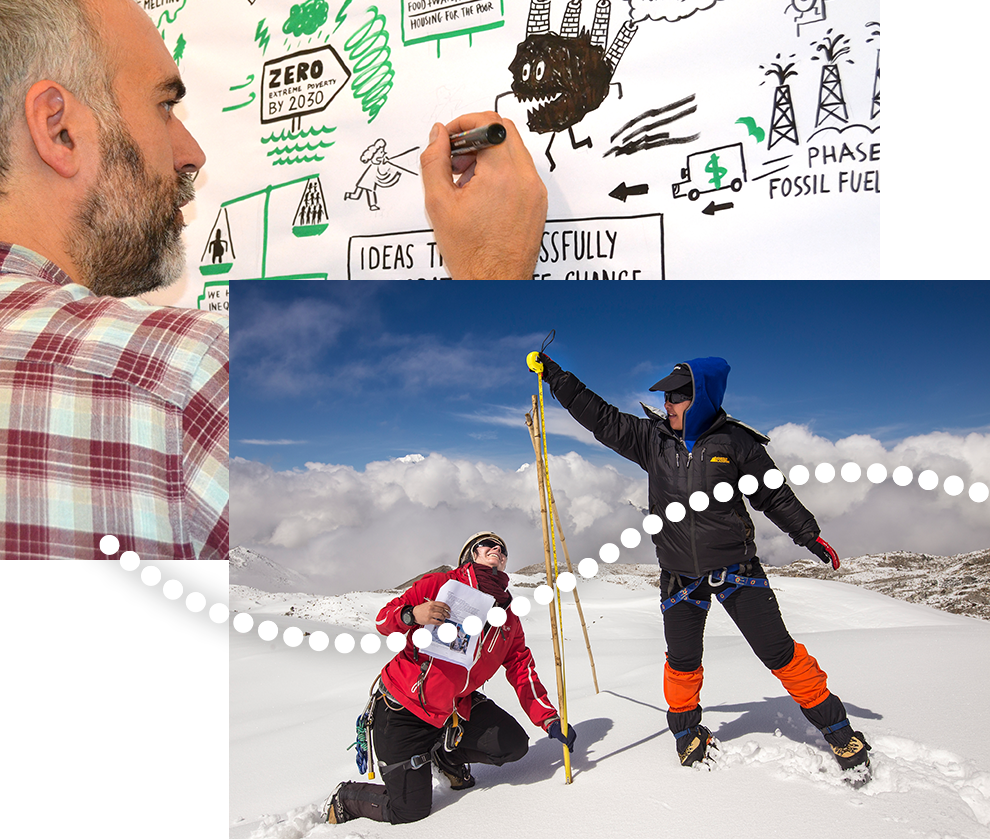Q&A: As climate change takes centre stage in Davos, SEI research highlights how rich countries are vulnerable to transnational climate risk

Introduction
Former US vice president Al Gore, veteran broadcaster Sir David Attenborough and 16-year-old Swedish activist Greta Thunberg, who addressed the UN Climate Conference last month, are among those invited to the World Economic Forum this week to talk about climate change. As SEI’s Magnus Benzie explains, new SEI research shows that the political and business leaders gathered in Davos have every reason to put climate change high up the agenda.Q&A
Q: Most traditional indices of climate risk and climate vulnerability show that it is poor developing countries that are most vulnerable to climate change. Yet your research points out that rich countries, too, are at risk. How so?
A: The framing that is often used when we look at climate change is how individual countries will be directly impacted. There hasn’t been much research looking explicitly at how such climate change impacts might spill over to other countries, or affect global systems.
The view of climate change that our research brings, for instance with our Transnational Climate Impacts Index, highlights how interconnected we are – especially rich, industrialized countries, which tend to be highly globalized. Climate-related impacts in other countries can affect their supply chains and investments, and even security.
Q: So which industrialized countries are particularly vulnerable to these transnational climate impacts, and how?
A: Each country is very different in how they interact with the rest of the world. Take trade, which is only one of the climate risk pathways we look at.
A number of the major economies are actually quite self-sufficient in terms of agricultural commodities, and they have reduced their dependency on global markets. However, many smaller rich countries – which include European states as well as rich states in the Gulf region, or emerging economies in South East Asia – are very dependent on food imports.
Moreover, any country high up in the value chain relies on imports for its manufacturing sector, and all of those are dependent on quite complex international supply chains. Now, lots of examples have shown that disruptions to supply chains – whether from a tsunami, earthquakes or floods – reveal that global supply chains are more vulnerable than people assume.
So, climate change is likely to cause disruptions or shocks in supply chains that might affect downstream industries. But a lot of countries are blind to the level of climate-risk exposure they actually have, because they don’t have very good sight of their supply chains. They tend to leave risk management to their immediate supplier. That is not enough, because the risks tend to be in in the second or third tier of the supply chain.
Q: Your work also provides a different perspective on the need for adaptation to climate change, and the related issue of climate finance. In what way?
A: Climate finance is often understood as a compensation for countries that might be affected by climate change. It is rarely talked about as an investment as well. Rather, the main reason for providing climate finance remain the historical responsibility of industrialized countries, and the argument for equity and justice. These are arguments that ministries of economics and finance don’t always buy into.
Our research adds an additional argument, namely one of self-interest: if rich countries are likely to be affected by transnational climate risk, that raises the value to them of seeing successful adaptation occur in the world. It increases the interest they might have in financing adaptation and mitigation via bilateral and multilateral climate finance mechanisms.
There are some dangers in that, because if you only provide climate finance out of self-interest, you might divert it to those you trade with, or which you have historic ties. Hence, we are careful about how we articulate this. But the existence of transnational impacts of climate change strengthens the case for investing more in climate finance.

(0) Comments
There is no contentYou must be logged in to reply.